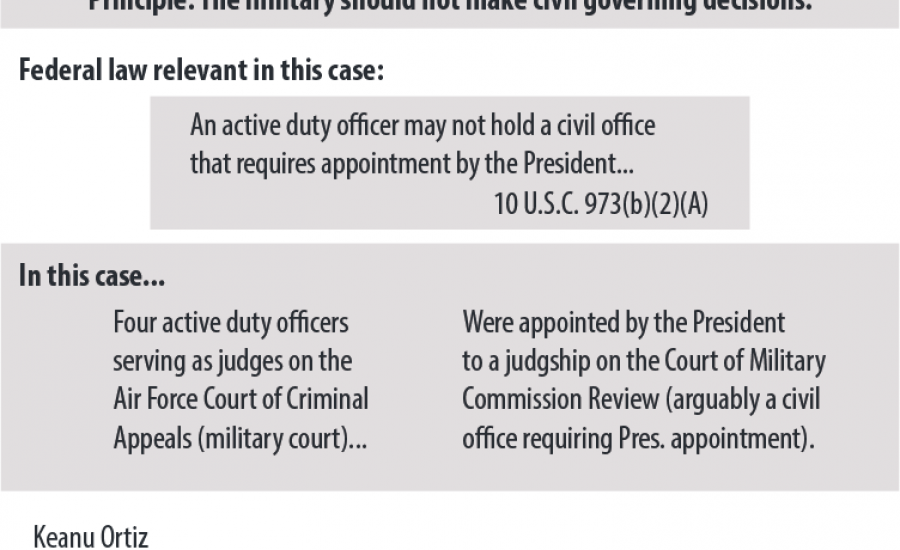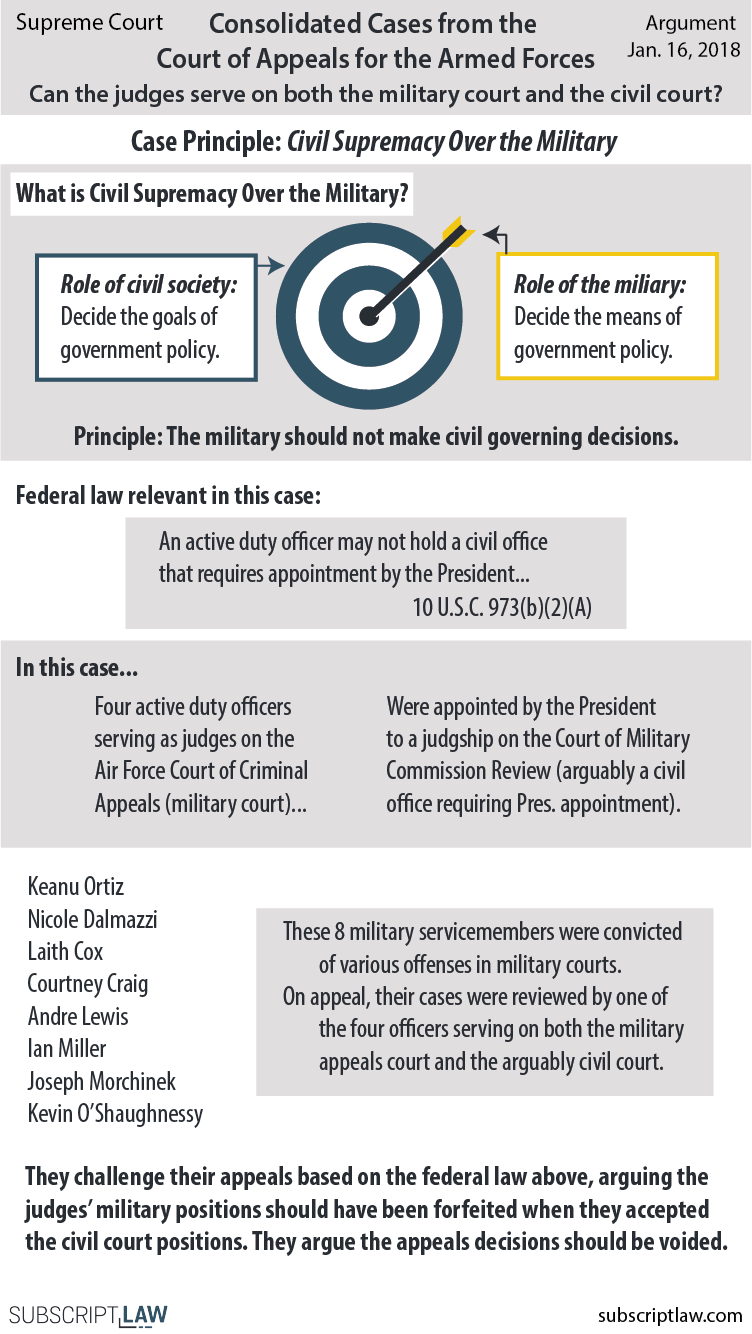Cox v. United States
Ortiz v. United States
Dalmazzi v. United States

This case has been decided. See how it turned out!
This case highlights a unique principle of governance relating to the military.
On January 16, 2018, the Supreme Court hears three combined cases to determine the boundaries between military and civilian officers. There is a principle (and a federal law) that establishes a separation.
This case: in the military court system
U.S. courts-martial (military courts) prosecute military servicemembers under the military code (Uniform Code of Military Justice). Appeals are held within the system, and the final stop is the U.S. Supreme Court.
That’s where this case ended up. Eight military servicemembers were convicted of a range of offenses (from drug offenses to sexual misconduct) and punishments were imposed. They appealed.
Dual-service of the appeals court judges
The military judges who heard the eight servicemembers’ appeals were serving both in the military court system and on another court – one that is arguably a civil court. This court – the United States Court of Military Commission Review – although military-related (as the name suggests) is a court to which the President nominates some civilian (non-military) judges.
The problem
There is a law that says military officers may not hold civilian offices. Because these military appeals court judges were appointed by President Obama to the non-military court, the servicemembers argue the judges concurrently are in civilian positions.
Then, the servicemembers take the argument a couple of steps farther and say: the officers should have automatically lost their military appeals court positions AND that the appeals decisions made by those judges (while serving improperly) should be voided.
More information:
- See more on the courts-martial system in the United States brief.
- Read about the history of the United States Court of Military Commission Review.



